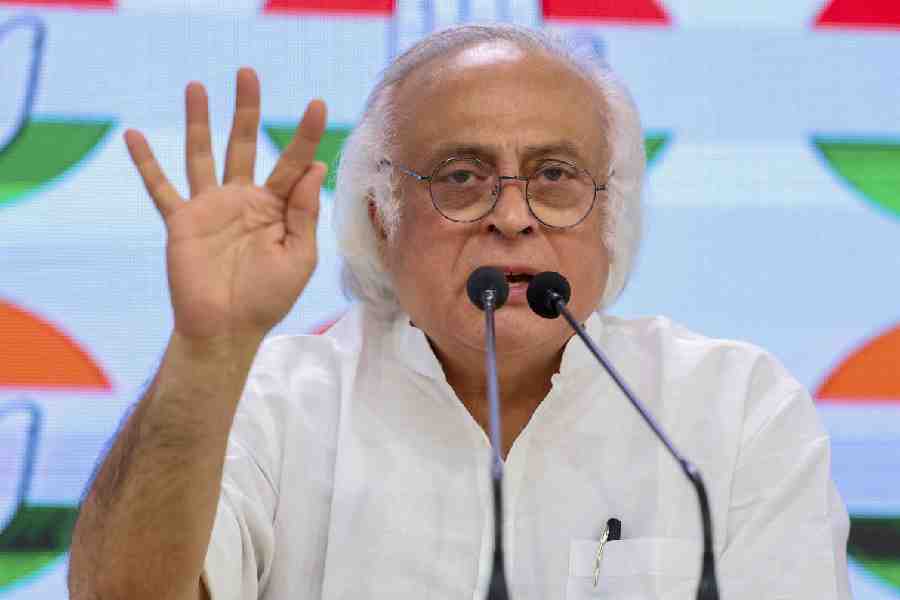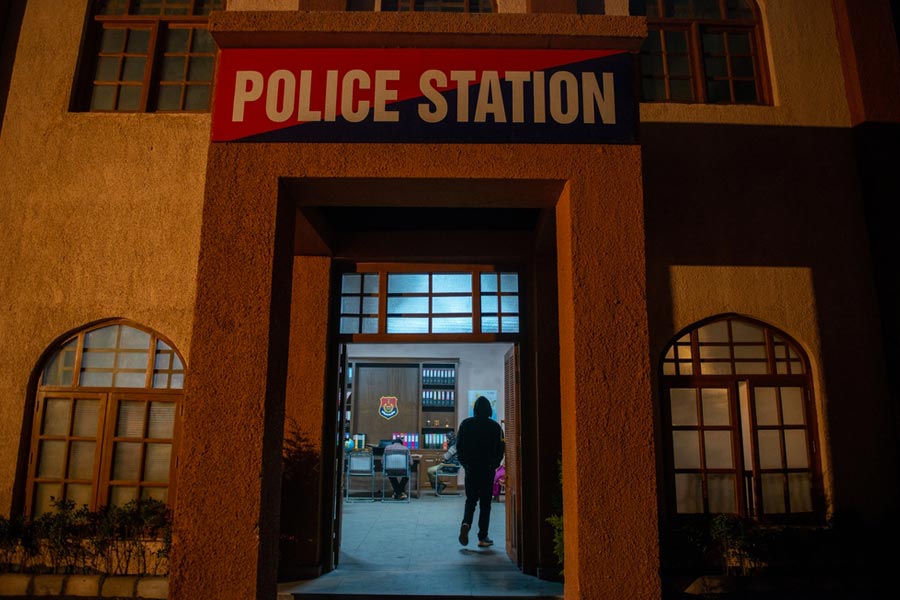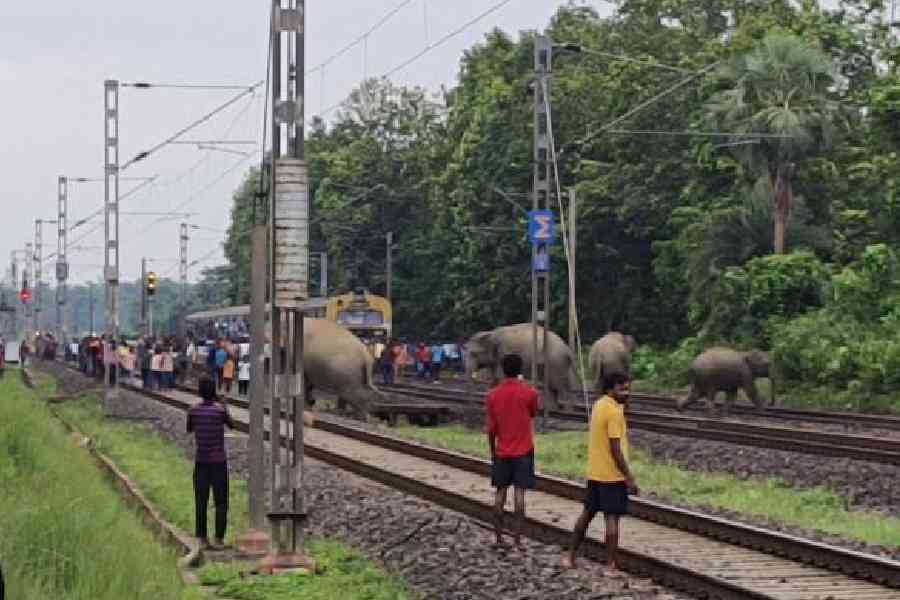.jpg)
Jump in ma’am, the water is refreshing and it is India’s holiest river after all,” said our river guide. We were on an inflatable raft riding some imaginatively named rapids on the Ganga.
Rishikesh was our first halt on a week-long road trip during which I was showing my friend Selda from Honolulu, Hawaii, the wonder that is India. Our route would also take in Delhi, Jaipur and Agra.
Now, Selda is someone who will meticulously wash an apple before biting into it and also someone who is apprehensive about stepping into an unheated swimming pool during the height of the hot Honolulu summer.
“There’s no way she’s jumping into this wild river,” I confidently assumed. But she jumped in without hesitation; gleefully body surfing along with the gentle rapid the raft was riding right now. It was the first indication that she intended to have an immersive Indian experience rather than just be the typical Western tourist.
She had landed in Delhi at two in the morning after Diwali, eyes burning from the pollution the moment she’d stepped out of the plane. We had started off towards Rishikesh from the airport itself at about 3am and had hit dense fog after Muzaffarnagar that made traffic tearing down the wrong side of the road even scarier.
.jpg)
Close to Roorkee, spotting a monkey on the road had happily surprised her. And, I explained how this was quite a normal sight on roads in India. And, a few hundred metres after that another surprise came her way when she saw a man nonchalantly walking along the road in the buff. Now I had to explain how this was certainly not normal on roads in India.
It seems that the non-textile traveller had sworn a vow to God to walk naked to Rishikesh if God had granted his wish, which the Almighty had.
All this, the chaotic traffic and jet lag had nerves stretched taut by the time we checked in at Atali Ganga 30km from Rishikesh at noon. But a session of Yoga on the lawns facing the green refreshing waters of the Ganga soothed all travel stress away. A certified Yoga teacher herself, Yoga by the Ganga ticked off one of the top ‘to do’ items on her India list.
Rishikesh was Selda’s insight into the mysticism of a modern India that has one foot so firmly stuck in its spiritual past; an ancient India that manifests itself so adroitly in Rishikesh where wayward cows are worshipped, marauding monkeys have diplomatic immunity as ambassadors of Hanuman and purifying baths are had in a river of dubious cleanliness.
.jpg)
Back in Delhi she realised why rush hour is called ‘crush hour’ when we rode the Metro to Chandni Chowk.
“Sardines in a tin have more personal space” was an insightful observation and “such harmonious chaos” was another one after a cycle rickshaw ride through the gullies of Chawri Bazaar where we pushed through impossible gaps that would make the entrance to Platform 9¾ seem absolutely normal.
Of strong digestive disposition, Delhi Belly didn’t hit her even after polishing off the oily mutton korma at Al-Jawahar’s and quaffing down tea made from full fat milk at the halwai opposite Jama Masjid’s Gate no. 1.
We were in Agra when the whole demonetisation drama began and I remember other foreigners in tears that morning at the Taj Mahal as authorities refused to accept demonetised notes or waive off the entrance fee. The flip side was that the Taj Majal was less crowded than I had ever seen it since I had first visited in 1987. Such was the lack of crowd that Selda could even indulge in a few moments of quiet meditation on one of the benches where people throng for that iconic photo.
.jpg)
That day on our drive from Agra to Jaipur, the toll booths en route were chaos and confusion as kilometre-long jams formed because drivers insisted on paying with defunct currency and tollbooth operators refused to accept the same.
We had valid currency notes and I had no patience to wait while others argued and so Selda was exposed to another Indian fine art, executed by me — that of cutting queues as I manoeuvred the big Audi A6 through razor thin gaps between two cars being assertive before and apologetic after.
But it was this characteristic Indian impudence that got us from Agra to Jaipur in reasonable time including stops at Fatehpur Sikri and the Chand Baori Stepwell at Abhaneri Village.
.jpg)
In Jaipur where Selda was introduced to real Indian richness by way of a 12mm layer of cream on top of her earthen tumbler of lassi at Jaipur’s famous Lassiwalla and some Indian wildlife by way of holding a cobra, she also brought a bit of Hawaii into the famous City Palace by teaching the moustachioed and turbaned staff the Hawaiian ‘hang loose’ sign called the ‘shaka’.
It was in the Pink City that she checked off the next ‘to do’ item on her India list — make friends with an elephant. This was a gentle pachyderm called Mahiya at the Elephantastic, an elephant farm near Amer Fort.
The trick to winning an elephant’s trust is to make eye contact, touch them and talk to them. I think Selda looked so deep into Mahiya’s eyes and spoke so soothingly to her that when she was riding on her back, Mahiya headed straight towards the Audi. I was genuinely worried that the elephant had a plan to stamp on the car so that her new found friend would have no means of going back, and stay with her. Thankfully all she wanted to do was pose with the car.
.jpg)
Finally when we headed back to Delhi we were so low on cash that we could only afford two ‘Indian’ tickets for the Qutub Minar. Tickets for foreigners cost Rs 500 as compared to Rs 30 for Indians. If the ticket checkers demanded identity proof like they had at other monuments, our game would be up. So I taught her the one thing that would make her appear Indian — the Indian head nod. And we went through the ticket check pretending like we were having an argument. That is me talking in stern Hindi and she nodding her head like we Indians do. The ticket checker didn’t bother interrupting us and we sailed through.
But by the end of her time in India, the head nod wasn’t all that she had picked up. She could now break a chapatti with ease with one hand, the chaos had become almost inconsequential, the phrase ‘arre yaar’ had started appearing in her sentences, and best of all when she wore a sari — for the first time ever — to a function in Mumbai, she carried it off with consummate class and ease.
I think India had worked its charm on her and she’ll be back!
READY RECKONER

♦ Where to stay: In Rishikesh, a good place to stay is the lovely Atali Ganga (www.ataliganga.com) and in Jaipur try out the Royal Heritage Haveli (www.royalheritagehaveli.com).
Photographs by the author

.jpg)








